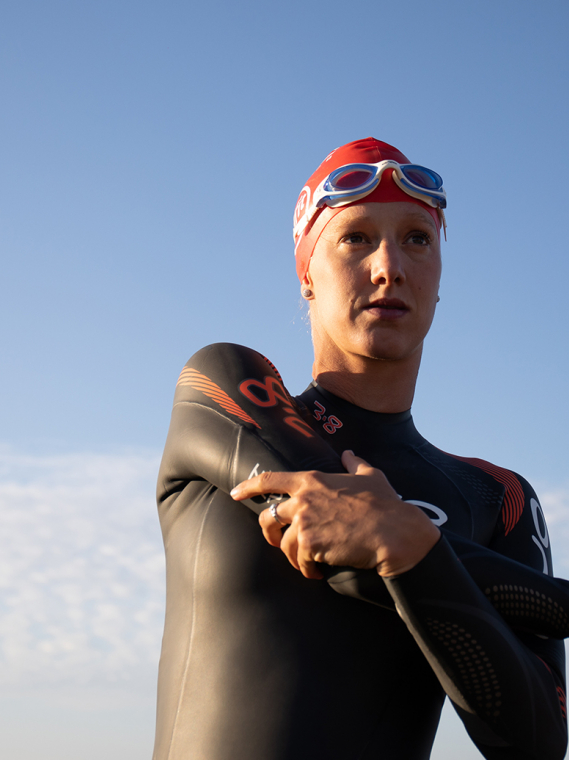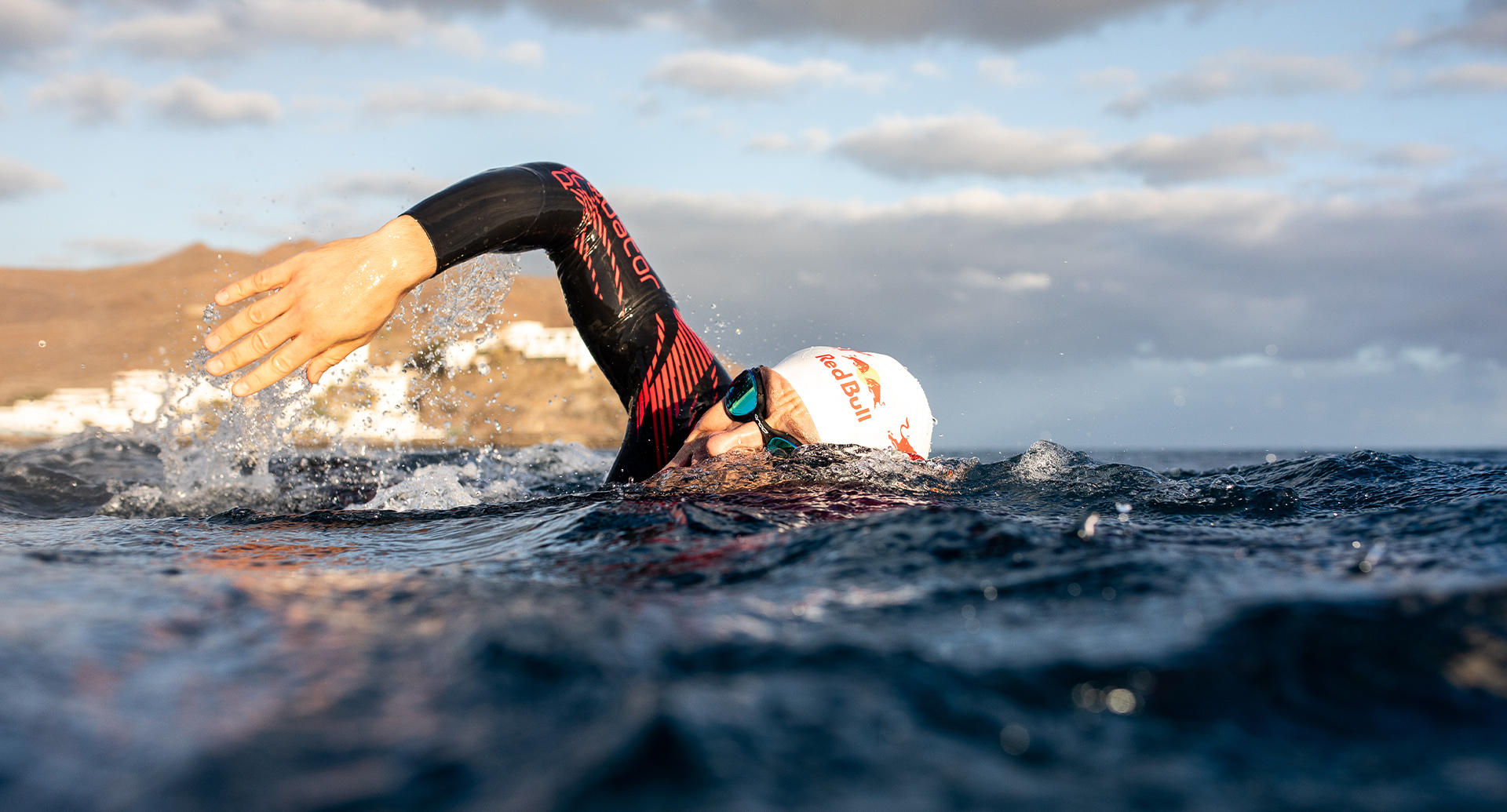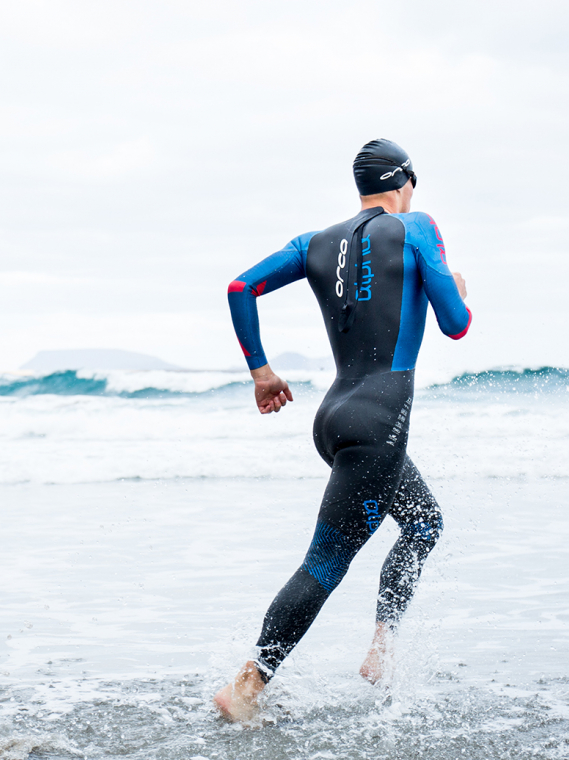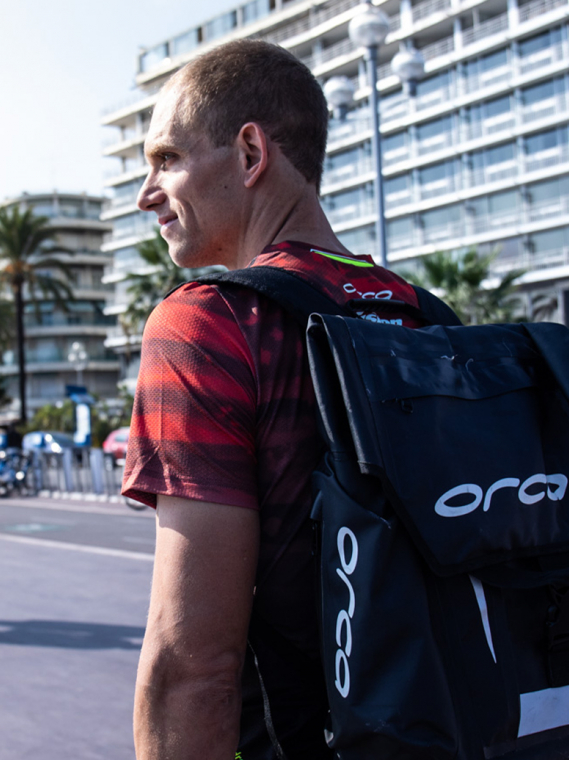Chatting with triathletes Bart Aernouts, Sebastian Kienle and Sarah True is always a pleasure and allows us to find out how they prepare themselves for such a demanding race, long distance triathlon. In this interview, these ORCA ambassadors tell us about their goals for the 2021 season and how they are preparing to compete at a high level. Such preparation requires great physical strength as well as the important work of mental strength.
Question: How do you normally feel before the start of a race?
Bart Aernouts: I feel nervous, like most athletes. But I try to focus on the work I did to get to this start line and enjoy the moment. And I try to be as “hungry” as possible to race!
Sebastian Kienle: It’s always the same mix of nervousness, excitement, a little bit of fear. But most of all, I feel alive and I realize that I do something that means something to me.
Sarah True: I call my pre-race sensations “nervcitment”: a combination of nerves and excitement. I love the uncertainty of the start line, not knowing how the day will unfold and whether or not I’ll be able to get the most out of myself. There’s no feeling quite like the pre-race jitters!

Q: When you feel you can’t go any further, when you want to give up, what goes through your mind?
Bart Aernouts: I always tell myself to keep pushing. Never give up. Sometimes situations (and feelings) can change very quickly. In these situations, I try not to look too far ahead and to just keep going. If this doesn’t work, I’m thinking of situations in the past where I got rewarded for not giving up.
Sebastian Kienle: That I‘m exactly where I want to be. Everything before this moment was just a foreplay. That’s the moment that you will be proud of later.
Sarah True: When it gets hard, I try to ignore the road ahead and think solely about what I can do in that exact moment. I focus on my form, trying to be efficient, and how to optimize how I can engage in the process of racing.

Q: What do your body and mind tell you?
Sebastian Kienle:: Of course, often your body tells you to stop. But usually, my body and my mind are a good team.
Sarah True: My body and mind are constantly in dialogue: sometimes they agree, sometimes my body tells me that I have more than my mind thinks, and at other times my mind knows that I can push harder. The hardest part of sport is knowing when to listen to your body or to your mind.

Q: Is there any difference between mental and physical strength?
Bart Aernouts: Yes! To perform on race day, especially in important and big races, it is key to be both physically and mentally ready. You need to be hungry to race! The mindset might be even be more important on race day because without this, the physical strength will only get you to a good result when everything goes well. And in long distance races most of the time, some bumps will be on the road on race day.
Sebastian Kienle: Of course there is. If you’re mentally strong you can do things you thought you’re not able to. But if you’re having a bad day mentally you can have the strongest body but you won‘t win. It is something very satisfying to realize how powerful the mind is. But at the end both go hand in hand.
Sarah True: The biggest difference between physical and mental strength is that building physical strength is largely a linear process and building mental strength is not. The upside is that the mental resilience we build can stay with us for life, unlike physical strength that constantly requires maintenance and increased stimulus.

Q: What are your main objectives this season?
Bart Aernouts: After last year’s situation, I’m just trying to go from race to race to start my season. Qualifying for IM Hawaii is my first big goal of the season. In the meantime, I’ll try to perform in some 70.3 [races]. Performing in IM Hawaii will always be my main goal and I would love to make it on the podium once again.
Sebastian Kienle: Kona.
Sarah True: My main objectives are to continue pushing myself and to always find joy in the process, no matter how difficult it may get.

For Bart Aernouts, Sebastian Kienle and Sarah True, their resilience and motivation to succeed in their sporting challenges will surely get them good results in this atypical season. At ORCA we will be right there with them offering all our support and encouragement so they can achieve their goals.












